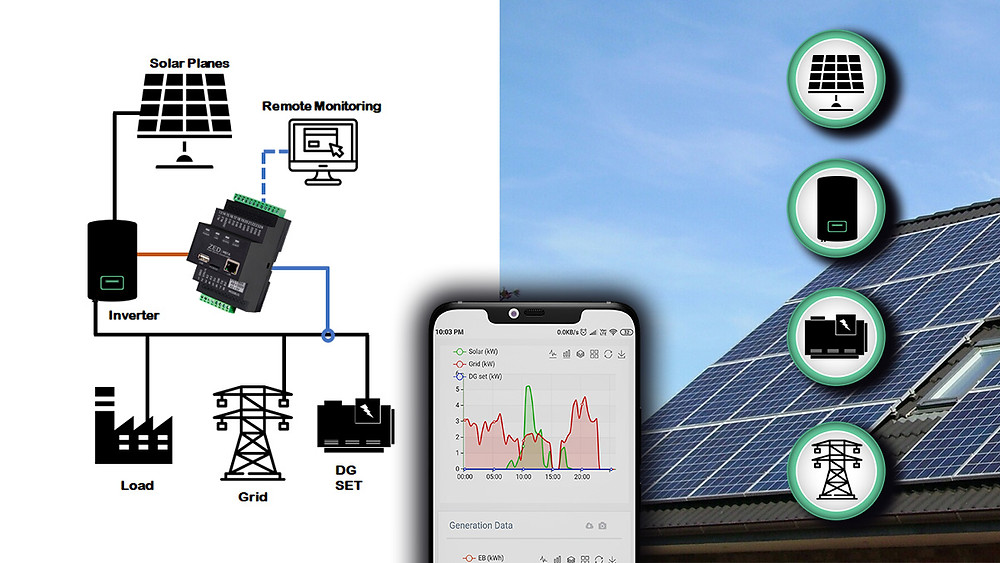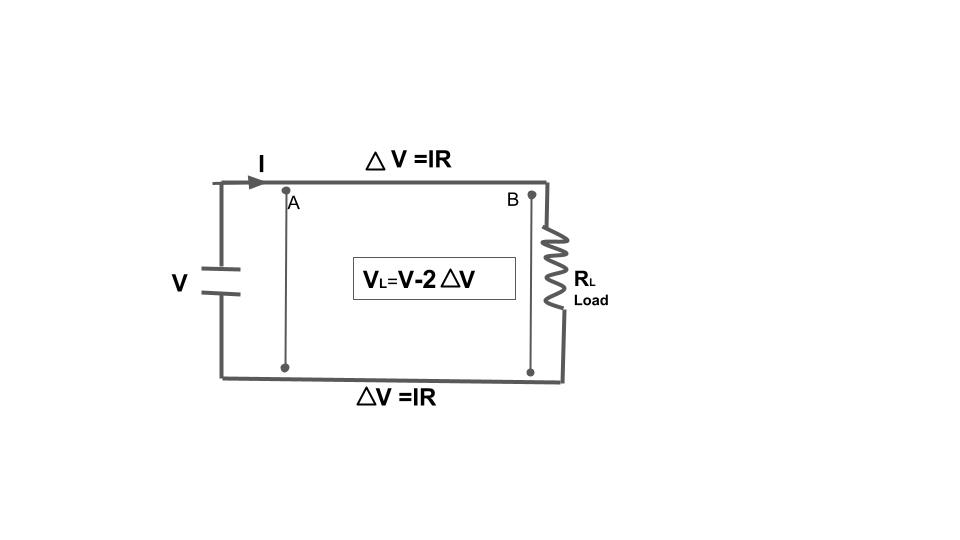How to Calculate DC Cable Size in Solar Power Plant

How to Calculate DC Cable Size in Solar Power Plant
In Solar PV systems appropriate dimensions(Diameter and Length) of wire or cables for Interconnection of modules, batteries and loads should be used. The size of the wires should be chosen to avoid excessive voltage drops in the line(wire or cable connecting two points electrically). Normally, the voltage drop in the line connecting modules to batteries should not be more than 5% of the line voltage. (why should it be 5%?). Similarly, the voltage drop line connecting to the batteries and load should not be more than 5% of the line voltage. Also, it should be ensured that the maximum current passing through the cable should be within the current handling capacity of the cables.

Also, you can understand from the figure, A schematic representation of line A-B connecting a battery of voltage V and load RL, is shown in fig. The voltage drop ΔV in the line due to current flow is the voltage that is used to overcome the resistance of the line. As per Ohm's law, if I is the current flowing in a line having a resistance of R ohm, then the voltage drop (across the line) will be IR. Due to this voltage drop in the line, the actual voltage available to the load will be V-ΔV, which is less than the supply or battery voltage. Such drop in the line voltage is not desirable and should be restricted to a limit, in many cases within 5%. For instance, if the drop in the line voltage connecting PV modules and battery is high, then the available voltage may not be enough to charge the batteries.
So the voltage drop for a given cable of specified material (⍴), Length (L), and cross-sectional area (A) can be estimated.
Vd= 2ΔV = 2IR = 2I⍴L/A
Where I is the current flowing in that cable
⍴ is the material resistivity
L is the length of Cable used(single run)
A is the cross-sectional area of the cable
Note*- For copper ⍴= 1.678*10^-8) and Aluminum ⍴= 2.82*10^-8 Ohm/MTR.
The factor of 2 is introduced due to the fact that the length of the cable used is actually double.
Note* - These all Calculations are as per IEC 60364-1 IS standard of the calculation.